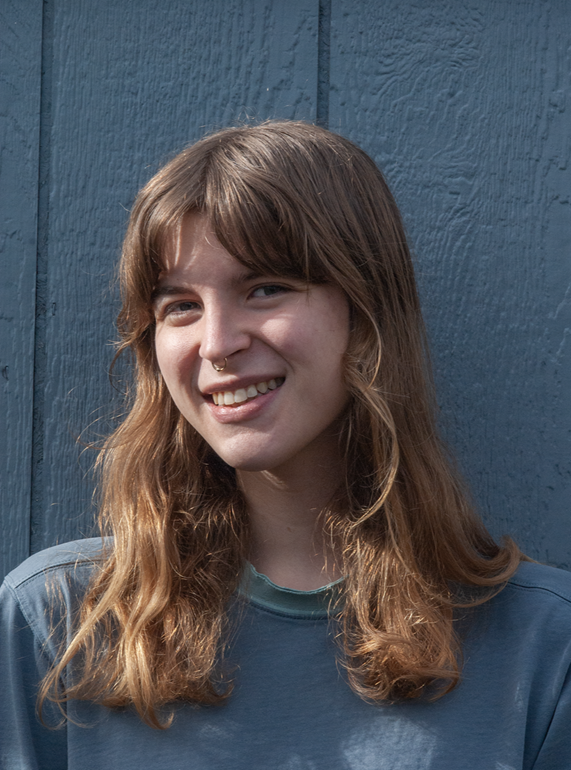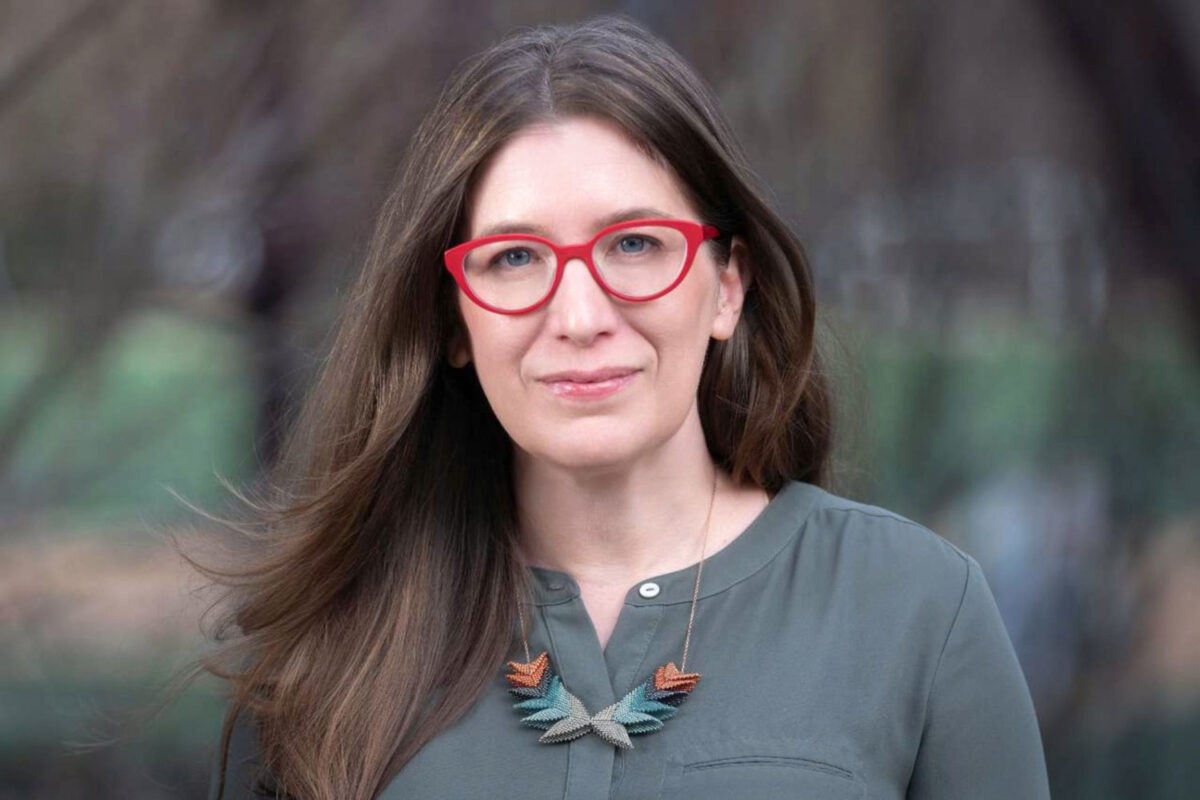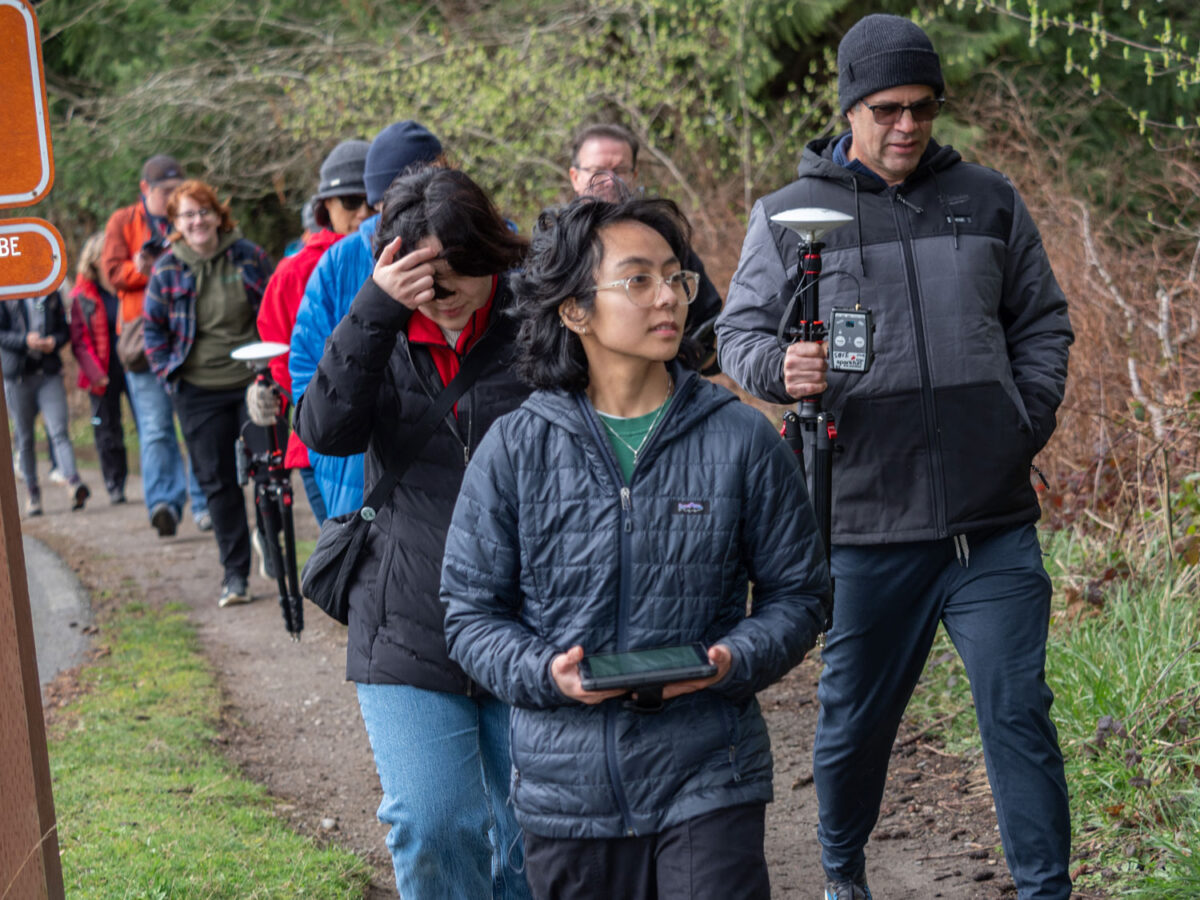
When Harper Hults was in kindergarten, the teacher noticed they looked bored while coloring by numbers and asked if they would like to start first-grade math and learn how to count by two. “I just remember being like okay, sure, whatever,” Hults recalled. “The worksheets in the first-grade classroom had potatoes on them, and I thought that was cool.”
Hults excelled in the higher-level classroom, and looking back now, said it was the start of what has been more than a decade-long pursuit to study mathematics. “I suppose I have always been ‘good’ at math, but I really love language and communication, too. That’s what I am really interested in. To me, math is just the most precise language we have access to.”
Currently a major both in Mathematics and in Computer Science & Software Engineering at the University of Washington Bothell, Hults next plans to attend graduate school to “take a crack” at solving some of life’s most complex questions.
“I just laugh at myself because I am so fascinated by how consciousness works and how we describe the human experience, which are some of the hardest questions to answer in the world,” they said. “Philosophers have spent hundreds of years describing consciousness qualitatively, but in order for a paradigm shift, we need a formulation that admits tractable analysis — which is what I eventually want to do.”
Already, Hults has undertaken a daunting task: to prove that the Markov partition for one of the most famous tilesets, the Penrose tiles, is valid. “French mathematician Sebastien Labbé did this for another notable tileset — which is a collection of rectangular images — a few years ago,” Hults said. “Our research is all about figuring out how to replicate it. What conditions allowed Labbé to do that?”
Dare to be daunted
Through the Research Experience for Undergraduates at UW Bothell last summer, followed by a Mary Gates Research Scholarship in autumn quarter, Hults set off on a quest to find answers.
In the REU, a 10-week program during which students participate in research projects and professional development activities, Hults began to study tiling theory, which looks at the covering of a surface, often a plane, using one or more geometric shapes called tiles, with no overlaps and no gaps.
Hults focused on Penrose tiles, which are aperiodic, meaning they don’t tile the plane in a globally repeating manner. The goal was to study the dynamical properties of the Penrose tiles in part with the help of Wang tiles, which are also aperiodic. To do this, Hults had to find a Markov partition — a tool used in dynamical systems theory — that captured the structure of the Penrose and Wang tilings in a dynamical system.
Distortion to clarity
Coming up with the Markov partition was a guessing game that involved Hults and other students in the REU cohort putting numbers into a script and analyzing the results.
Depending on the numbers, the tiling image on the screen would come out in varying degrees of distortion. The more distorted the image, the farther away they were from the desired numbers, which define a vector lattice that determines the shape of the Markov partition.
The students went to work to find the right numbers. It took several weeks and dozens of distorted images, but finally, in mid-July, the team found them. The “magic” numbers were put into the script, and the screen came out crystal clear, indicating it was the Markov partition.
“It was really cool to see the noise resolve, and all of a sudden this beautiful mathematical object appeared,” Hults said. “But honestly, it just deepened the mystery for me. We found that there are many different parameters that produce Markov partitions, and the next step was understanding how they were all related.”
A continuing quest
Hults was able to continue the team’s research through the Mary Gates Research Scholarship, a competitive program that enhances the educational experiences of undergraduate students through research guided by faculty. They received the scholarship in autumn quarter and used it to prove that the partition would work on all the infinite variations of Penrose tiling.
In order to prove this, Hults spent countless hours combing through Sebastian Labbé’s research and codebase. “He has huge amounts of code that he has written for this stuff, but his documentation is kind of shallow, so I spent a lot of time just reading the source code.”
Making sense of these documents has been the most challenging part of the entire project as Labbé’s work is a mixture of topology, dynamical systems theory, combinatorics and computer science. “It is really complicated, messy math, and I have been teaching most of it to myself.”
Understanding it is vital to proving the partition is valid, though, as Labbé’s papers contain all the theorems for proving the validity of Markov partitions. “Learning how to read those research papers has definitely been a big hurdle, but I am grateful because it pushed me to self-teach on a level I never had before,” Hults said.
Persevere to payoff
Casey Mann, professor of Mathematics in UW Bothell’s School of STEM, served as Hults’ adviser in the Mary Gates program. “Harper has taken on some very advanced topics in our research,” he said, “and I am very impressed by their ability to see the important ideas that lie beneath the layers of technical definitions, notation and jargon. This, along with their tenacity, curiosity and ability has allowed us to make good progress on our project.”
Indeed, after nearly a year of research paired with unwavering determination, Hults applied some of Labbé’s research to their own work and cracked the code.
“Penrose tilings have this nice self-similar structure that carries over from Penrose to Wang, so then by effect you get a bunch of nice properties of the Wang tilings. I used these properties to unequivocally prove the validity of results from my REU team and my original research to confirm the Markov partition for the Penrose shift,” Hults said.
“It’s been really satisfying to see everything come together and have my perseverance pay off. I’m excited for what comes next!”
Hults will be presenting their research at the Undergraduate Research Symposium on May 19. “I’m just really grateful to the Mary Gates Endowment for enabling me to spend my time doing research. Symbolic dynamical systems theory is super interesting to me, and I’m going to use it in my future. I’m happy that I’ve been lucky enough to spend so much time learning about it.”



